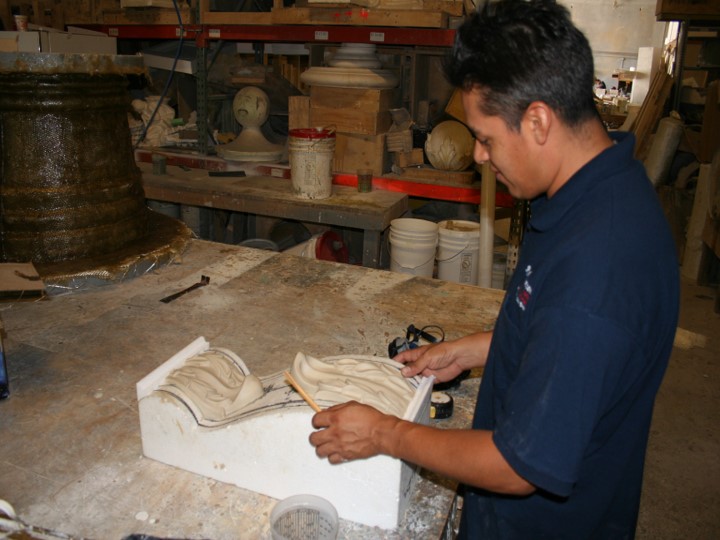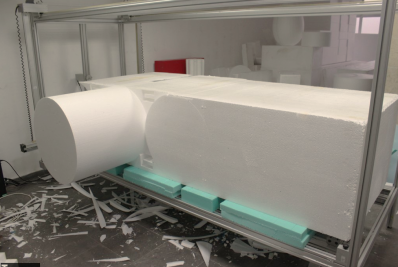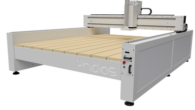
Precast Stone Manufacturers Setup.

Table of contents
Precast Stone Production Explained In Great Detail.
The information here is intended to help you understand the bedrock of any successful precast stone manufacturers setup: Having the right equipment and tools is crucial.
Taking you through the most essential pieces that you’ll want to have in your production area. This isn’t just about buying the biggest or the most expensive machinery; it’s about choosing items that will ensure your products are made to industry standards and maintain high quality by consistency.

I/We promote transparency This post or site may contain affiliate links. This means only if you make a purchase through these links, not just by clicking, I/we may earn a small commission at no extra cost to you.
As an Amazon Associate, I earn from qualifying purchases.
Precast Stone Manufacturers 1ST Priority.
The precast stone manufacturers biggest piece they are going to need is a concrete batching plant. Or to start with a small concrete mixer or mixers.
This depends on what size operation you have in mind. So this is something you can skimp on if you’re not looking at high production volumes. But you must weigh your products going into the mixers. There are small-batching concrete mixers with built-in scales.
A concrete batching plant allows for the precise mixing of materials, normally by weight and omits the potential for human error in quantities. Whether integrated with a front loader or a conveyor system, it scales up your production and injects efficiency right from the beginning.
Loading Materials.
You do need good access for the raw products to be placed close by ready for loading into the batch plant, So a front-end loader is a must, a dual-operation forklift works well for this too.
When the first concrete batching plant was purchased, the financial outlay was a major concern. With the upfront costs, but how wrong we were to think that way. it took less than 6 months to reach its break-even point, the savings in the white cement mixes were over $30,000 in the first year. And it also saved 1.6 in manual labourers, per minimum of an 8 hour shift, per day, which worked out somewhere between 3,750 – 4,680 man hours @ the pay rate, in year one, and 2 labourers in the 2nd year.
The key production staff knew far more than the management about the concrete batching equipment and its operation.But we knew how much the quality of the cast stone had improved because of the consistency in colour and the repeated great test results. One of the best capital purchases we made. This batch plant below is as close to the one I had, except it had a separate cement silo for bulk bags and no conveyor mixing discharge as we fed our mixers.

The Heart.
Now, as mixers are the heart of your precast stone manufacturers production, we had 2 portable concrete mixers on standby. We then had 3 more concrete mixers on a rail system under the concrete batching plant. Remember, the mixer’s job is to provide a consistent and well-blended mix, which is fundamental to the quality of your castings.
Plan for a method to dispose of the washout remains ahead of time as it can become a huge problem. No trash or rubbish removal company wants set concrete in its containers.
Precast Stone Manufacturers Production Area.
When it comes to pouring your products, production tables are where the real core of your operation begins. You don’t want to cut corners here. Having enough space and a level surface to work on will improve your workflow and end result. Make it easier on your workforce to move around with barrows or fork trucks. If done right the surface of your tables can be the actual face of any flat-faced material, like veneers.
Vibrating tables, on the other hand, ensure that your mix is compact, air-free, and as smooth as you need it when making limestone-style cast stone the wet cast way. They’re not needed for the textured finish using the soda texturing method.

The humble shovel, wheelbarrow, and bucket might seem basic. But you’d be surprised at their indispensability for the precast stone manufacturers setup. From moving mix to transferring finished products, they are the unsung heroes of any production floor. Our production crews came up with their own novel ideas for scoops that were used to transfer the mix from the barrow to the mold. Recycling their liquid laundry soap containers with a section cut out was a perfect and novel solution.
Additionally, when it comes to adding colors fibers, or specialized ingredients, postal scales and zip-lock bags are your best friends. These allow for precision that keeps your colours consistent batch after batch. For any precast stone manufacturers a record of all weights, mix formulas and their code names should be kept somewhere safe. And using a competent person and at least one understudy to do the measuring and weighing tasks is a must.
Precast Stone Manufacturers Setup & Table Space.
Making your choice of release agents that are be used in the process is something you need to plan for early. As our operation was mostly wet cast we used a blend of cooking oil and cooking fat. We mixed these based on the current temperature, the colder it got the less of the grease. Both of these products were biodegradable and they worked really well for holding the texturing material in place too.
This mixture was brushed onto the molds in most instances, occasionally a need to wipe the mixture on with a rag was also needed. These products were kept next to the pallet of baking soda. And a good-sized bucket or 2 of mixed and clumped baking soda was always to hand for the guys to refill their containers.
Safety Equipment.

Safety is paramount, so invest in good quality personal protective equipment like gloves, masks, and safety glasses. And to keep your operation humming along without a hitch, you’re going to want a well-stocked toolbox for ongoing maintenance to prevent those equipment downtimes.
Clean Up.
And have a dedicated clean-up schedule with a rota of personnel responsible for the task. An excellent production person with many skills is a must for medium to larger operations too.
Besides a great production crew it boils down to choosing suppliers who stand by their products with robust warranties and excellent customer support. Companies that get you what you need when you need it. Whether through rapid delivery service or off-the-shelf purchases, they are worth their weight in gold. Select those that work best with you on a professional level.

Tools and Equipment Needed
- 1, Batching Plant. And A Loading Method Conveyor.
- 2, Concrete Mixer(s).
- 3, Production Tables
- 4, Vibrating Table(s)
- 5, Shovels
- 6, Wheelbarrows.
- 7, Buckets and scoops (many)
- 8, Postal Scales For Accurate Colour Weighing
- 9, Large Scales for Batching If No Batching Plant. & for Shipping Weights.
- 10, Screw Guns # To Suit The Amount Of Workers.
- 11, Scapers, For Mold & Table Cleaning.
- 12, Finishing Trowels. 1 Per Man.
- 13, A frontend loader
- 14, A forklift and a pallet truck.
- 15, A mixing drill and paddle. For “knocking up the soda mix”..
Conclusion.
Once you have these foundational pieces in place, you’re well on your way to running a productive and quality-driven wet precast stone manufacturers facility. But, this is just the start. I’m now going to take you through the equally critical process. Identifying the right mold-making materials and knowing how to evaluate suppliers. And explaining how the quality of mold, is a game changer for your finished products.
Please watch for future reference pages which will focus on materials, products and equipment only, in more detail.
We hope you find the information useful, but if you have any questions or need help, send us a message. You do have to sign in and confirm these days to comply with government rules. Sorry for the inconvenience.
Author Rob











Leave a Reply